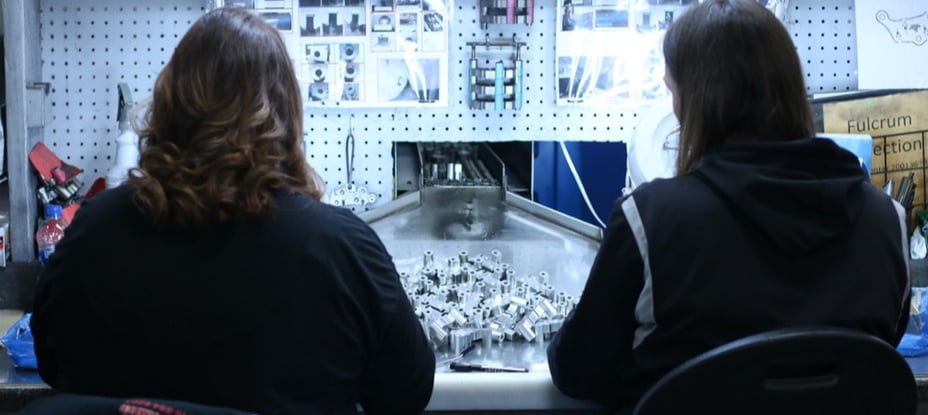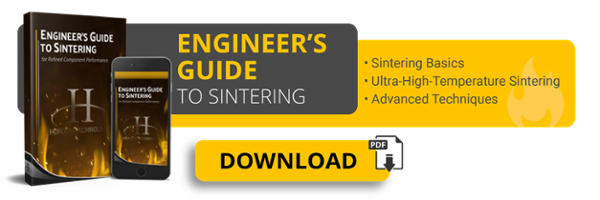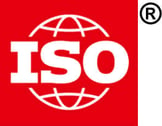Powder metallurgy (PM) is increasing in popularity for both magnetic and structural applications. But no matter how many design proposals come across the desk of a PM manufacturer, there’s always a unique challenge.
So, what are your powder metallurgy design considerations and concerns?
Early engagement and exchange of information with your powder metallurgy company of choice should always happen before you get deep into development. By engaging a powder metallurgy manufacturer early, you can quickly determine the most cost-effective way to make a powder metal part -- or whether your part is even a fit for PM.
Here's a look at what you should discuss with your PM partner at the onset of each project.
5 Things to Tell Your Powder Metallurgy Manufacturer Now
A powder metallurgy vendor needs to know these five parameters of your project as soon as possible:
- Size and shape
- Magnetic and mechanical properties, including strength, fatigue, and hardness requirements
- Tolerances
- Price point
- Order volume
1. Size & Shape
A major advantage of the powder metallurgy process is that it can create shapes that are expensive or impossible to fabricate via conventional machining or other competing processes. Depending on the specific features, or lack thereof, PM may not always be the most cost-effective option unless the order volume is high. (More on that in a bit.)
Size is also a key consideration, as most powder metal parts only comprise about 12-14” of planar surface area. Anything over 16" will require segmentation into multiple components. (For example, engine blocks would be far too big for a powder compaction machine.)
The most capable powder metallurgy companies will consider minimum and maximum sizes on a part-to-part basis, since the rest of the part’s geometry has such a major impact on manufacturability.
When in doubt -- even if you don’t know the exact shape of your design yet -- take your idea to your manufacturer. How does your part need to work within your assembly? An advanced powder metallurgy supplier may have a solution that’s actually more compact and requires less material (and less money).
2. Mechanical & Magnetic Property Performance
What are the mechanical and magnetic characteristics that your part needs? This will determine the type of metal your manufacturer uses, not to mention the sintering process.
- Strength is an ability to endure an applied load without deformation or failure. Strength often includes the ability to withstand cyclic stresses, aka fatigue.
- Wear resistance is a part’s ability to withstand surface abrasion and is often measured by the hardness of a part. This can also imply keeping the integrity of surface features. Alloy materials that are more wear-resistant tend to be harder.
- You'll also want to discuss corrosion resistance with your powder metallurgy partner so the product is able to stand up to its end-use environment.
- Magnetic performance is a broad term that often begins with whether your application is AC or DC. In DC applications, your main concerns may be magnetic saturation or permeability. In AC applications, you need to look at core losses and magnetic induction.
If you're new to working with PM or aren't sure how to optimize your part, work with a metal parts supplier that offers design assistance. Your property needs may further limit your pool of potential third-party partners. Not all manufacturers use advanced material alloys, and not all sintering furnaces are capable of ultra-high temperatures.
3. Tolerance
Yes, one of the biggest advantages of powder metallurgy is its ability to create unique shapes. That doesn’t mean you should abuse this powder -- er, power.
While PM can produce precision metal forming at tighter tolerances than many think, your powder metallurgy manufacturer should establish reasonable limits. This will make your design easier and cheaper to manufacture, and in fewer steps.
Occasionally, a secondary machining operation will still be necessary. Options include:
- Sizing
- Machining
- Grinding
In most cases, these secondary processes add to the total cost of powder metallurgy.
By communicating tolerance requirements with your precision metal parts manufacturer ASAP, you'll get a more accurate quote and avoid surprises later.
4. Price Point
As is the case with any manufacturing technology, there’s a fine balance between cost and functionality. Cost is usually a fluid factor when it comes to powder metallurgy.
Here’s an example of what goes into your price considerations for powder metallurgy services:
- Level of mechanical/magnetic performance
- Size and weight
- Shape complexity
- Tolerances
- Order volume

5. Order Volume
Powder metallurgy is generally a high-volume part-making process that requires an investment in part-specific tooling. That investment is a key component in weighing cost vs. volume of PM (and competing processes).
Where powder metallurgy is truly able to shine is when it comes to large part runs of several thousand or more. On large part runs, you’ll receive enough parts to more than make up for the tooling investment.
Once thought of a limitation of powder metallurgy, even prototyping motor components has become viable in recent years -- even with soft magnetic materials. If your vendor can provide production-intent data, your prototype model can actually benefit from using PM materials over traditional steel laminations:
- More predictable performance
- Easier to translate into production
- Can optimize investment for long-term solution
Engage early with your PM partner to relay how much you’ll need, when you’ll need it, and how to make prototyping successful.
Checking Your Boxes
Whether you’re looking to improve a current powder metal product or upgrade from a competing process like die casting, communication is key. Make a checklist of what’s most important for the supplier to know, and both sides will be more efficient.
To learn more about what a powder metallurgy manufacturer can and can’t handle, download the free handbook below:
(Editor's note: This article was originally published in September 2020 and was recently updated.)




